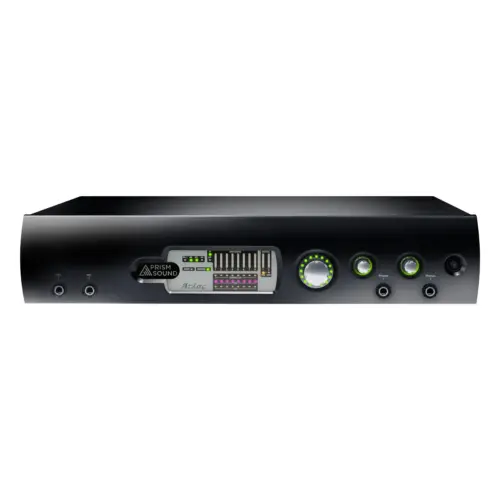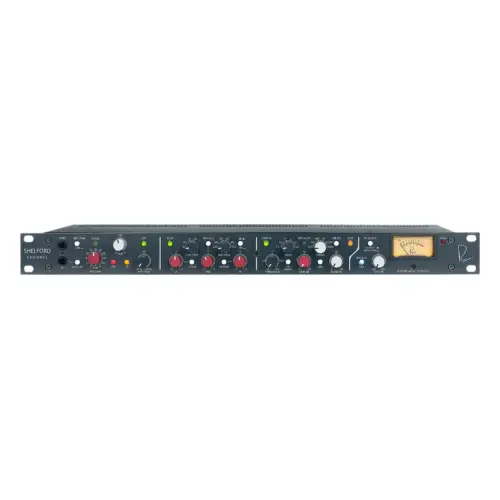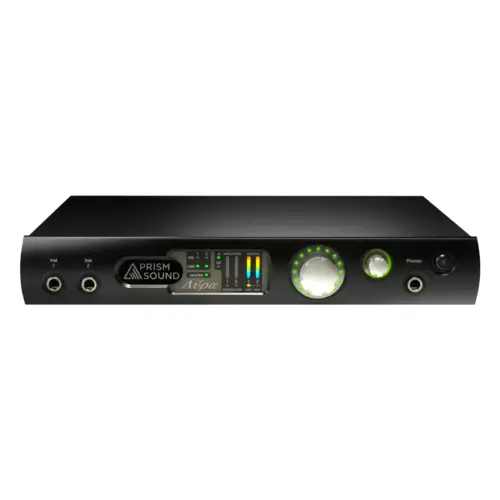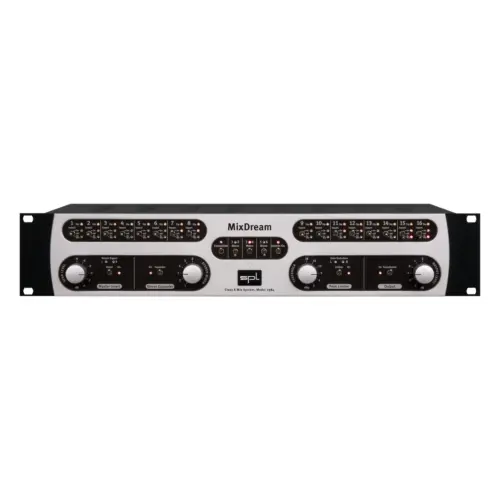The Rupert Neve PORTICO II Master Buss Processor is the ultimate dynamics, tone, and stereo field control for your 2-buss.
Based around the high voltage, discrete and class-A signal paths made famous in the 5088 Mixer, the Rupert Neve PORTICO II Master Buss Processor is a creative tool that redefines the boundaries and limitations of traditional 2-channel compression and limiting. Though originally developed for mastering applications, the MBP quickly became a favorite of mix engineers, tracking engineers, and even FOH engineers. From mixing bass-heavy EDM to a delicate master of a chamber ensemble, it has something to offer everyone – no matter the use or genre.
Classic Design, Evolved
With input and output transformers designed and implemented by Mr. Rupert Neve, the high-voltage 72V topology found in the Rupert Neve PORTICO II Master Buss Processor will integrate flawlessly with virtually any system. Additionally, the MBP incorporates mastering-grade detented pots throughout to fine-tune its revolutionary dynamics, tone, and stereo field controls. This new topology is a significant evolution of Mr Rupert Neve’s classic designs with appreciable benefits to headroom, dynamic range, distortion, noise, slew rate, bandwidth, and accuracy while still providing the sweet, musical performance that has been a part of countless recordings.
The Compressor
The Rupert Neve PORTICO II Master Buss Processor’s two compressor sections allow virtually limitless possibilities in dynamics for either dual mono or stereo sources, with controls for ratio, threshold, attack, release, blend, side chain HPF, limit and make up gain. When engaged, the compressor section can be used in both feed-forward and feed-back modes to provide a transparent “modern” response (feed-forward), or a smoother, more musical “vintage” response (feed-back). Peak mode alters the compressor’s attack to react to peak transients with a roughly .1ms response time. When the Peak switch is disengaged, the compressor responds to the RMS signal in conjunction with the attack and release settings.
SC HPF inserts a high pass filter at 125 Hz into the side chain to deal with intense low frequencies that may skew the response of the VCA with certain songs and instruments. And lastly, Blend creates a parallel mix between the compressed and dry signals. By mixing the compressed and dry signals, it is possible to increase the volume of quieter elements in the source material (for instance, delicate snare brushing on a track with much louder hits), while maintaining a natural dynamic feel for the louder elements.
The Limiter
The Rupert Neve PORTICO II Master Buss Processor also features an extremely versatile, transparent and musical limiter. At first glance, one might scoff at the single knob operation – however, this limiter is extremely intelligent, knowing how to appropriately respond to the various signals presented to it. Our new Adaptive Release Technology is behind this revolutionary performance. Using a blend of release time constants, this limiter will simultaneously respond quickly to transient material (such as the “snap” of a snare drum) and slowly to more sluggish signals (such as a bass guitar). This configuration allows the limiter to grab a transient and let go just an instant later, while also dealing with more constant signals in a slower, more musical way.
In this manner, the Rupert Neve PORTICO II’s limiter can provide a much more aggressive amount of limiting than typically possible, while maintaining the essential character of the music and remaining free of the modulation distortion usually found in a fast-acting limiter. Additionally, the limiters share the same discrete, class-A gain module and VCA with the compressors, so using the Limiter does not introduce more stages that the music would have to pass through.
The Stereo Field Editor
The stereo field editor on the Rupert Neve PORTICO II Master Buss Processor takes traditional M-S techniques to new heights with width, depth and corresponding bandpass filters. The width control enables the user to increase or decrease the width of a stereo image (wide/mono) and adjust the amount of ambience inherent in the recording. As the width control is rotated toward wide, the amount of difference material is boosted, often resulting in more ambient material, and accentuated stereo reverbs.
Conversely, the stereo field is contracted when rotated to mono, and, if the left and right channels are highly coherent (i.e. both channels include closely similar material that is in phase), this mono content is enhanced. The depth control adjusts the spatial positioning of elements in the sound stage. Center-panned elements like solo instrument or vocal can be brought forward in a mix, in relation to supporting instruments. In many cases, these same elements may be virtually eliminated without adversely affecting the music bed. Used in conjunction, the depth and width controls effectively alter the perceived room ambience and dimension.
To fine tune the SFE, there are individual filters that select what frequency information is reintroduced from the width and depth circuits, thus tailoring each effect to a specific bandwidth. And by engaging the SFE TO COMP button, Mid and Side signals can each be routed to the Rupert Neve PORTICO II’s two compressors, allowing the unit to operate in full M-S mode (as opposed to standard L-R operation).
What is Silk?
Every mix deserves its own treatment. The Silk & Texture circuit allows you to fine-tune the amount (and type) of harmonic content in the output stage. This means your signal can be adjusted from extremely transparent to thick, weighty settings that produce several times the amount of sonic color found in Rupert’s vintage modules – and in two very unique modes. No matter what sound you’re looking for, Silk will help get you there.
Drive the mix hard, choose your Silk flavor, and crank the Texture knob for a rich, saturated, vintage vibe – or disengage Silk entirely for clear, wide-open sonic beauty. The choice is yours.
Frequency Response (Compressor and SFE Bypassed, Unloaded)
5 Hz to 100 kHz: +/- 0.5dB typical, 120 kHz: -3dB typical
Maximum Output Level (Compressor and SFE Bypassed, Unloaded)
20 Hz to 40 kHz: +25 dBu typical
Total Harmonic Distortion and Noise
1 kHz, +20 dBu: Less than 0.003% typical
20Hz, +20 dBu: Less than 0.10% typical
20 kHz, +20 dBu output: Less than 0.010% typical
COMPRESSOR
Threshold: -30 dBu to +20 dBu
Ratio: 1.1:1 to 40:1
Blend: 0% to 100% Compressor
Gain: 0 dB to +20 dB
Attack: 20 mS to 80 mS
Release: 100 mS to 3.0 S
AC Power Consumption
85 Watts Max
Fuse
5 x 20mm Bussman type GDA 2.5A, Fast Acting, Ceramic
Product Dimensions (H x W x D)
3.5” (8.9 cm), 19” (48.3 cm), 12” (30.5 cm)
Shipping Dimensions (H x W x D)
5” (12.7 cm), 23” (58.5 cm), 12” (31 cm)
Shipping Weight
20 lbs (9.1 kg)
Download the User Manual in PDF format.
$7,999 Original price was: $7,999.$7,899Current price is: $7,899. Inc GST




‘Ordio Productions’ and the Ordio Productions Logo are owned exclusively by Ordio Productions
If you have any questions, please contact us
All content is the copyright of Ordio Productions and cannot be used without written permission